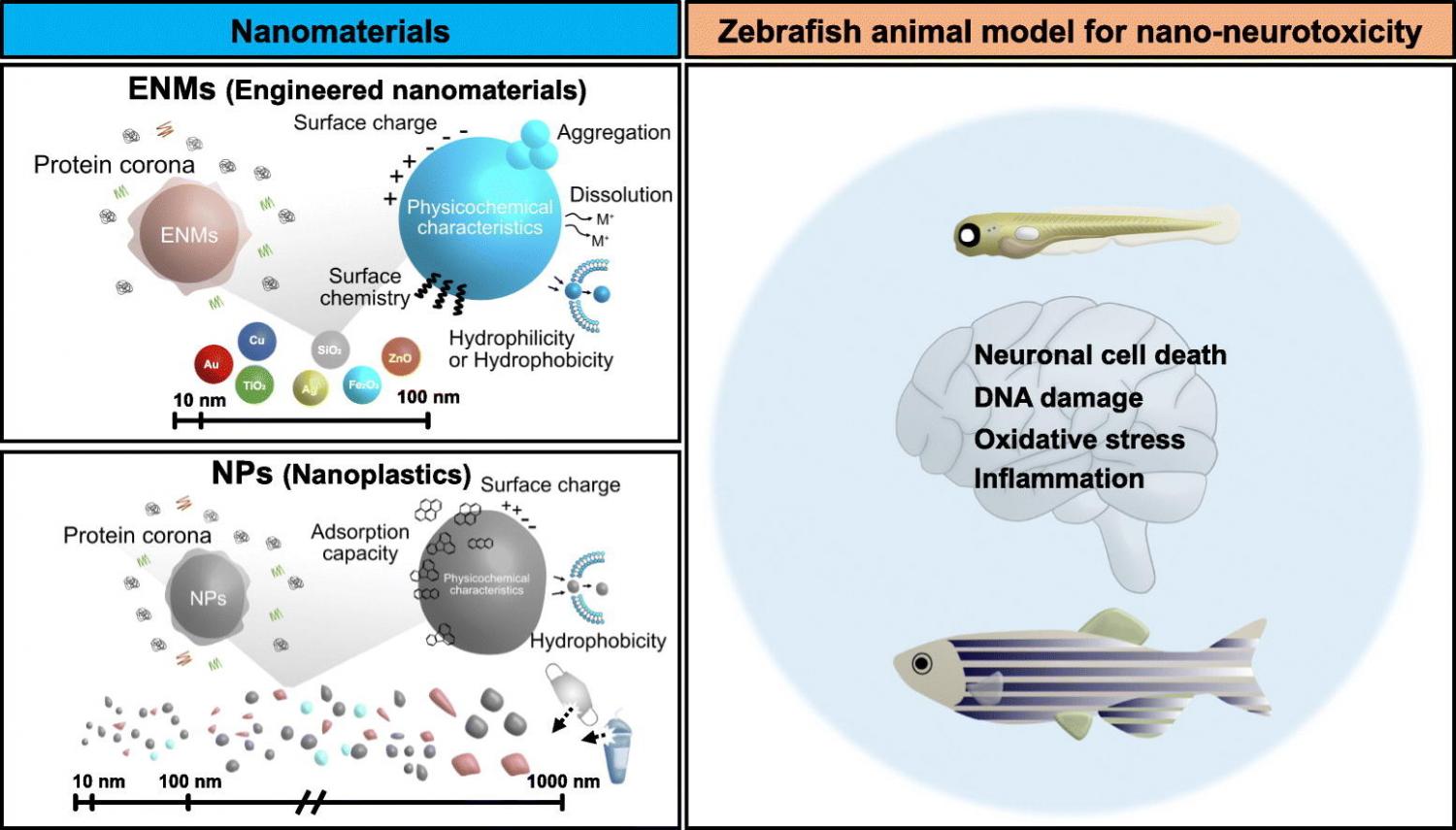
Nanomaterials have been widely employed from industrial to medical fields due to their small sizes and versatile characteristics. However, nanomaterials can also induce unexpected adverse effects on health. In particular, exposure of the nervous system to nanomaterials can cause serious neurological dysfunctions and neurodegenerative diseases. A number of studies have adopted various animal models to evaluate the neurotoxic effects of nanomaterials. Among them, zebrafish has become an attractive animal model for neurotoxicological studies due to several advantages, including the well-characterized nervous system, efficient genome editing, convenient generation of transgenic lines, high-resolution in vivo imaging, and an array of behavioral assays. In this review, we summarize recent studies on the neurotoxicological effects of nanomaterials, particularly engineered nanomaterials and nanoplastics, using zebrafish and discuss key findings with advantages and limitations of the zebrafish model in neurotoxicological studies.
